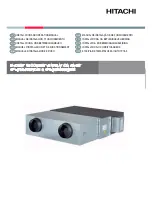
Normal noise produced at bearings
Type of noise
Normal noise
Race noise
It is a continuous noise without any sudden change. This noise is
generated when a ball rolls on the race surface.
Roller dropping
noise
It is a cyclic noise. When load applies in the radial direction (which is
mostly the case), a ball is restricted by the load applied, and then released
to be free, repeatedly. This noise is generated when the ball comes to the
boundary. It occurs mostly with low speed bearings, but is harmless.
Retainer noise
A retainer maintains the relative position of the ball. There is a small
clearance between the retainer and the outer ring, which allows the
retainer to rotate; however, a continuous noise is generated when the
retainer contacts the outer ring occasionally. It is a slightly annoying noise,
but cannot be eliminated easily. It occurs mostly with low speed bearings,
but is harmless.
Abnormal noise produced at bearings
Type of noise
Abnormal noise
Contaminant noise
Dust may get inside a bearing due to careless handling of grease or for
other reasons. In such a case, the bearing makes an irregular grinding
noise.
Replace the old grease with new grease.
Damage noise
Any damage on the ball may generate a discontinuous irregular noise. Any
damage on the race surface of the inner or outer ring may generate a
continuous noise. If the noise is faint or insignificant, the bearing may still
be used after being refilled with grease. If the nose becomes serious,
replace the bearing.
Rust noise
The same problem described in the damage noise occurs. If the noise
becomes serious, replace with a new bearing.
Scraping noise
It is a scraping noise without a regular cycle. This noise is generated when
sliding occurs or lubrication is not effective between the ball and ring or
between the ball and retainer. Replace the grease with high-quality grease.
6.2 Periodic
inspection
Warning
Before carrying out the inspection of the fan, be sure to turn off the
main power. Otherwise the fan may suddenly start up during
automatic operation etc., exposing personnel to great danger.
Carry out the periodic inspection at least once a year.
The periodic inspection items include the following points, in addition to the daily inspection
items.
(1) Refill the bearings with grease.
(2) Inspect the alignment and V-belt.
Inspect the V-belt for wear or damage, and check the tension. If necessary, replace or
re-tension the V-belt.
(3) Inspect the play at the connection between the impeller boss and the main shaft.
(4) Inspect the impeller and the main shaft for corrosion and wear.
(5) Clean the inside of the fan, and apply anti-corrosive agent or otherwise make repairs.
6-2





































